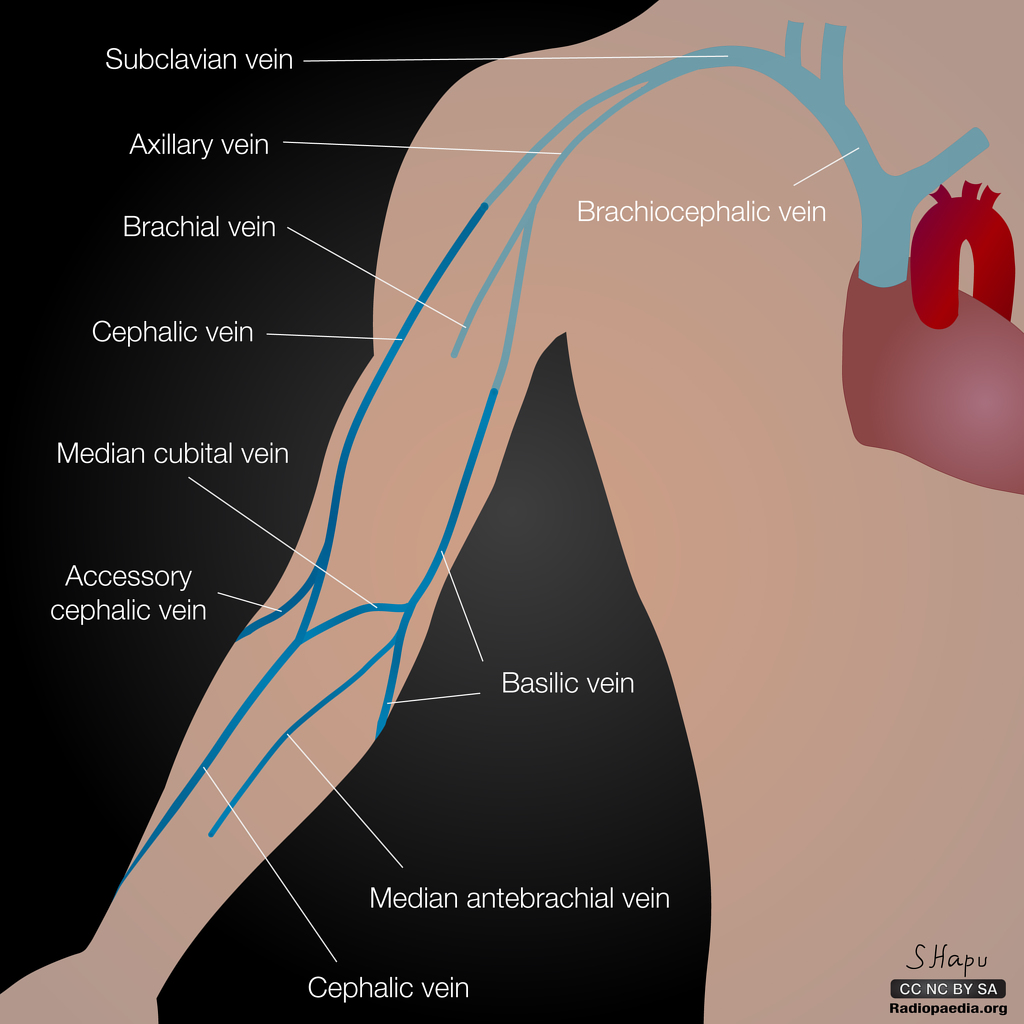Difference between revisions of "BASILIC VEIN"
From NeuroRehab.wiki
(Imported from text file) |
|||
| Line 5: | Line 5: | ||
<br/> | <br/> | ||
<br/>[[Image:upper-limb-veins-diagram.jpg]] | <br/>[[Image:upper-limb-veins-diagram.jpg]] | ||
<br/> | <br/><b></b> | ||
<br/><b>Image: </b>Case courtesy of Dr Sachintha Hapugoda, [https://radiopaedia.org/ Radiopaedia.org]. From the case [https://radiopaedia.org/cases/52482 rID: 52482] [Accessed 17 Apr. 2019]. | <br/><b>Image: </b>Case courtesy of Dr Sachintha Hapugoda, [https://radiopaedia.org/ Radiopaedia.org]. From the case [https://radiopaedia.org/cases/52482 rID: 52482] [Accessed 17 Apr. 2019]. | ||
Revision as of 00:45, 25 December 2022
SUMMARY
1. Runs in the post-axial (medial) border of the arm.
2. It pierces the deep fascia half-way b/w the elbow & axilla, joins the brachial veins to form the axillary vein.

Image: Case courtesy of Dr Sachintha Hapugoda, Radiopaedia.org. From the case rID: 52482 [Accessed 17 Apr. 2019].
Reference(s)
R.M.H McMinn (1998). Last’s anatomy: regional and applied. Edinburgh: Churchill Livingstone.
Gray, H., Carter, H.V. and Davidson, G. (2017). Gray’s anatomy. London: Arcturus.